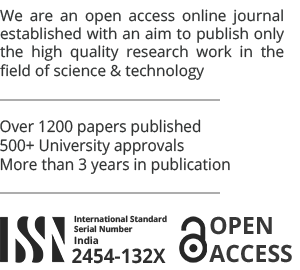Comparing Three Neural Network Techniques in the Classification of Breast Cancer
Published by: Smitha Hallad, Prof. Roopa Hubballi
Full DetailsAn Interactive Interface for Natural Language Query Processing to Database Using Semantic Grammar
Published by: Soumya M. D, B. A Patil
Full DetailsPerformance Evaluation of Various Routing Protocols of Mobile Ad Hoc Networks
Published by: Sheetal Kadyan, Gopal Singh
Full DetailsIntersection Movement Assistance for Vehicles
Published by: Manoj Pai, Uma Mudenagudi, Gourav Sharma
Full DetailsEnergy Preservation through Rest Planning Algorithm for Wireless Sensor Networks
Published by: Vinayak S. Korishettar, Manisha Tapale
Full DetailsModified Load Balancing Technique to Improve Performance of MANETs
Published by: Harpreet Rupra, Rasbir Singh
Full Details
